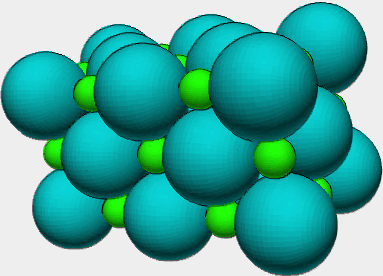![]()
heat and light (flames)
explosion
color change
evolution of a gas
formation of a solid (precipitate)
heat (using a delta symbol)
temperature (at which the reaction is run at)
pressure
time (length of time the reaction is allowed to proceed)
Fe(s) + S8(s) --heat--> FeS(s)
S8(s) + O2(g) --heat--> SO2(g)

N2(s) + O2(g) --heat--> 2NO2(g)
In this reaction we might consider most any compound containing nitrogen and oxygen. There are several, but NO2(g) is the best product when nitrogen reacts with oxygen.C(s) + O2(g) ----> CO2(g)
In this reaction we would predict CO(g) or CO2(g). We know these are two compounds containing carbon and oxygen.P4(s) + 5O2(g) --heat--> P4O10(s)
THis is a tough product to predict, but you know it now!
Balance the following equations;a) S8(s) + O2(g) --heat--> SO2(g) Answerb) Fe3O4(s) + H2(g) ----> Fe(s) + H2O(l) Answer |
Name |
Formula |
methane |
CH4(g) |
ethane |
C2H6(g) |
propane |
C3H8(g) |
butane |
C4H10(g) |
pentane |
C5H12(l) |
hexane |
C6H14(l) |
heptane |
C7H16(l) |
octane |
C8H18(l) |
nonane |
C9H20(l) |
decane |
C10H22(l) |
Balance the following equations;a) CH4(g) + O2(g) --heat--> CO2(g) + H2O(g) Answerb) C4H9SH(g) + O2(g) --heat--> CO2(g) + H2O(g) + SO2(g) Answerc) C4H10(g) + O2(g) ----> CO2(g) + H2O(l) Answer |
The answer to this question is found in the definition of a mol,
a mol and is defined as the number of 12C atoms in 12 g of 12C. This number has been experimentally determined as 6.022 x 1023 atoms. A mol of any substance is defined as the amount of the substance which contains the same number of units as are in 12 g of 12C or 6.023 x 1023 units of the substance.
Remember a unit is an atom, a molecule or a formula unit.
Formula |
Molar Mass (g) |
Mg |
24.305 |
Cl2 |
70.9 |
MgCl2 |
95.2 |
C6Hl2O6 |
180 |
Calculate how many mol are in 10.0 grams of glucose (C6Hl2O6).
How many molecules of glucose are in 10.0 g of C6Hl2O6?
How many oxygen atoms are there in 10.0 grams of C6Hl2O6? |
Sample Problem:
|
Calculate the number of magnesium atoms in 10.0 g of magnesium.Answer |